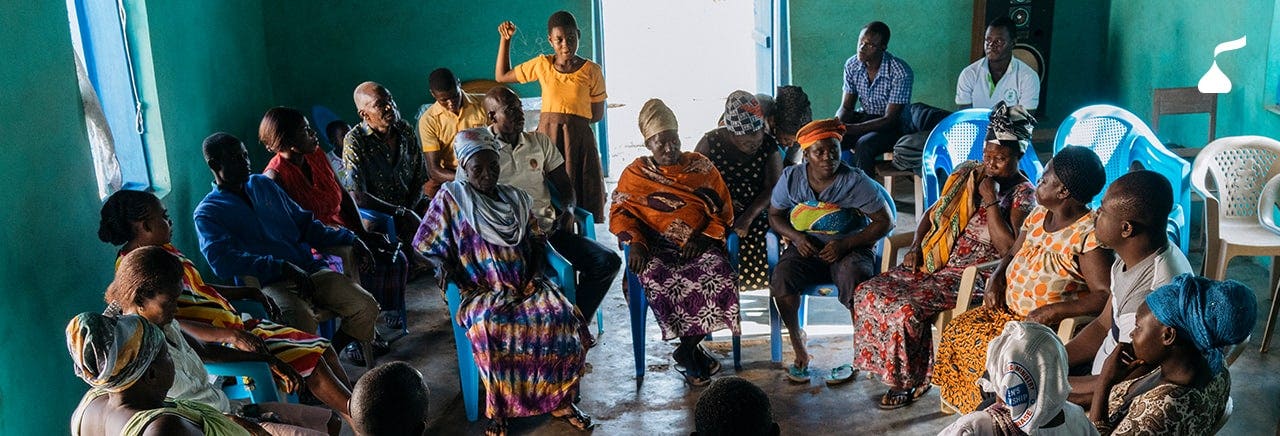The Power of Partnerships in Cocoa Sustainability
Key Takeaways:
- Hershey is committed to ensuring the responsible sourcing of cocoa.
- Cocoa For Good is our holistic cocoa sustainability strategy—a program that invests $500 million into cocoa-growing communities and creates a better and more sustainable cocoa supply chain one step at a time.
- The Cocoa For Good program would not be possible without partnerships with suppliers, NGOs and industry partners. These relationships remain at the center of the program’s success and have led to strategies like CocoaAction and The Cocoa and Forest Initiative.
In February 2021, I celebrated my 10-year anniversary working in Cocoa. It’s been quite the journey.
It’s a journey that has allowed me to gain diverse perspectives including from a certification standard-setter (UTZ), an implementer (NGO Solidaridad) and from a brand perspective (The Hershey Company), leading our holistic sustainable development program (Cocoa For Good) backed with a $500 million commitment.
One thing I’ve learned through all of my experiences is that making a difference in cocoa can only be achieved through the power of partnerships and industry alignment. Partnerships with governments. Partnerships with suppliers and NGOs. And pre-competitive alignment across industry to ensure that industry efforts are the most effective they can be.
Poverty is at the heart of many of the challenges within cocoa-growing communities and alleviating that poverty is not an easy task. It elicits a range of emotions and criticisms because everyone agrees that it is unacceptable that farmers struggle to make a decent living and support their families through their work. I firmly believe that’s why we need to segment this daunting challenge, to identify specifically what’s contributing to it and forge ahead to find solutions. Bit by bit, step by step, we keep moving forward and make progress. No one can do this in isolation, without trust, collaboration, compassion and creativity -- and leveraging the scale and efficacy of partnerships and alignment.
As I reflect on the significant changes and the evolution of our sector over the past 10 years, I am proud to see some real threads of change; changes that have also not gone unnoticed by the 2020 Cocoa Barometer.
Ten years ago, it would have been hard to conceive that any company would:
- Drive innovation in the spaces of nutrition, education & information and land tenure; spaces historically shied away from by companies due their sensitivity or complexity. For Hershey, these innovations were driven together with partners including USAID, Project Peanut Butter, Jacobs Foundation, Farmerline, Winrock and Meridia. Innovation in the land tenure space, for example, evolved into the Cote d’Ivoire Land Partnership (CLAP) to advance affordable land documentation launched in 2020.
- Come together with eight other companies to align activities under the umbrella of one joint strategy: CocoaAction. By partnering in a non-competitive manner, we created a safe learning space to lean into the unknowns versus accepting the unknowns. For Hershey, it meant focusing on the right actions, aligning with our suppliers, building capacity on the ground and getting meaningful work done in the areas of professionalizing farmers, empowering communities, raising women’s voices and uplifting children to grow into their potential through access to quality education.
- Join with industry and with governments to align on a joint agenda (including new laws & regulation) for forest protection, with each taking responsibility for activities: The Cocoa And Forest Initiative. Using geospatial satellite imagery, we can now detect farms in locations at risk and detect deforestation. For Hershey, it means that we are on a steep learning curve with our suppliers and partners to build capacity on the ground in the areas of agroforestry and landscape programs. But we are doing it.
Have our efforts produced the results we were aiming to achieve? We are making progress but there is still a lot of work to do. It is part of the journey. We are learning with every effort, navigating with a destination on the horizon, even if we don’t always have 100% of information available. There is power in keeping your eye on the goal, learning, adapting while keeping the focus and leaning in through the power of partnerships.
These partnerships come in different forms:
- public-private partnerships that are in-line with origin countries’ National plans that go beyond our supply chain and seek to drive systemic change.
- partnerships that are implemented within our supply chain and wider cocoa communities. Some have elements of best practices that we know will work, such as upscaling Child Labor Monitoring and Remediation Systems to lower child labor rates – by more than 30% to date. Or Village Savings and Loans Associations that not only create a savings culture but also empower women and show to be resilient social structures even during a pandemic. Some partnerships we will pilot and try new solutions that we believe in, such as affordable land documents for farmers so that they feel confident to invest in their farms.
CocoaAction has been a powerful steppingstone for the nine companies to bring ideas from paper to practice and to tackle the biggest challenges within cocoa. Without CocoaAction, there would have not been a path to setting up the multi-stakeholder Cocoa and Forest Initiative (CFI) or even for Hershey’s own Cocoa For Good program.
When I embarked on my professional journey in 2002, I remembered reading Socrates in school: “I know that I know nothing.” It’s also called the Wisdom Paradox. I think it’s a good start; to remain humble, listen, collaborate and seek joint solutions so that we can foster prosperity, a higher quality of life and resilience for farmers now and generations to come.
Step by step, we will get there.
